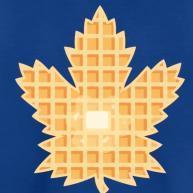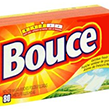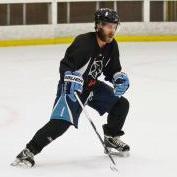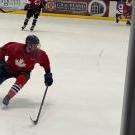Slate
Blackcurrant
Watermelon
Strawberry
Orange
Banana
Apple
Emerald
Chocolate
Marble
Slate
Blackcurrant
Watermelon
Strawberry
Orange
Banana
Apple
Emerald
Chocolate
Marble
Leaderboard
Popular Content
Showing content with the highest reputation on 09/17/19 in all areas
-
3 pointsThis is a bit of an older thread, but I figured i'd throw my 2 cents in as i've frustratingly dealt with over-pronation and maybe someone might read this and it may help them. I am by no means an expert, i'm not an podiatrist either, but what I do have is experience with just this type of thing. I've thrown money around and wasted time trying to overcome it. I've only been skating for about 9 or 10 months now, and the first few months were ridiculously infuriating, to the point where I was going to give up my dream of being able to skate well enough to play some hockey because I was not getting anywhere with my learning process and was being ridiculously limited in my ability to do certain things because I just could not gain an outside edge, my skates were just leaning inward too much. So here's what I learned in my trials and tribulations. There are 2 things that can help with over-pronation, a short term fix and a long term fix, and I would recommend both. The long term fix is a second on the advice from Vet88 who helped me along the way and gave some great advice just as he's done in this thread. I still use a short term fix when playing in games, but use the long term fix doing practice skates. 1) Short term: Wedges and inserts. I must have read a million threads and a million articles on over-pronation and fixes for it for ice skating. However, every single thing I read related to wedges and insoles were completely wrong. I even read an article where one bloke was going into detail on how to create wedges out of a flip flop to fix over-pronation in a skate, and it was completely wrong missing the point of the mechanics. I spent hundreds or even thousands for wedges, inserts and even $700 for custom orthotics and all of these not only did not help fix my pronation, they made it worse. It's about the mechanics of an ice skate. You can help with pronation by using inserts and wedges designed for over-pronation, but only in a shoe or trainer. In a shoe your foot lays flat, in a shoe with a flat sole, on ground that is flat, Your shoe is not going to rock from side to side, it remains flat, so if you have an insole in your shoe that raises the arch in your foot, it's going to raise your foot all the time and will help alleviate issues with over-pronation. And I do recommend inserts or wedges in shoes or trainers for anyone dealing with a pronation problem, especially if the pronation is causing foot pain. However, in a skate, you do not have a flat sole resting on solid ground, you have a thin piece of steel that will allow your foot to rock side to side. Your foot is going to be in the position it wants to be in when you put pressure on the skate. If you have over-pronation your foot is going to cause the skate to rock inwards because your foot wants to be in a specific position when you put pressure on it. Now add an insole or wedge that is trying to raise the inside of your foot. When you put pressure down on the skate, your foot is still going to want to be in a specific position regardless of the insert or wedge underneath it, and because the skate can rock from side to side, when you plant your foot it will force itself into the position it wants to be in and will only cause to skate to rock inwards even more and you have now exacerbated your pronation issue. In a skate, for the short term as a quick fix, you need to deal with over-pronation from a wedge and insole perspective as over-supination. I still use wedges that I created in my skate, but only during games and will continue until I have reached a point that I do not need them anymore, which is rapidly approaching, however, I use the wedges as if I was trying to fix an over-supination problem, on the outside of the foot. I created wedges to lift the outside of my foot in the skate. This may sound silly and counterintuitive, but it's about the mechanics of a skate. I know that my foot will force itself into a position it wants to be in. By adding wedges to the outside of my foot in the skate my foot still goes into the position it wants to be in, but now because of the wedges my skate tilts outwards and allows the blade to sit squarely on the ice and allows me to gain an outside edge. No matter what you do, your foot will still position itself in the way it is naturally going to be regardless of what position the skate is in. With wedges or inserts it's not a matter of fixing the over-pronation, that's just not happening with wedges, inserts or even insoles, it's a matter of getting the skate into the position it needs to be relative to the position of the foot inside it. Think of it like this, your foot will always remain in the same position relative to the ice, with over-pronation it will be tilted inwards on an angle relative to the ice surface, you can't change this short term. The only thing you can do is try to get the skate around your foot to be positioned differently. If you use pronation wedges or insoles you're not going to change the position of your foot, you'll only change the position of the skate around your foot, so if you use pronation wedges or inserts on the inside of your foot, you'll only push the skate inwards more and your problem will be even worse. With wedges or insoles for the outside of your foot, again, you're not going to change the position of your foot relative to the ice, but what it will do is change the position of the skate to make the skate lie more outwards which will help align the skate to the ice. You can also accomplish this by shimming, which would move the runner into a position square to the ice. I personally never went for this route though simply because I felt it would hinder me in the long term because the whole boot is still in a rocked inward position, only the runner is square. And also moving the holder laterally is an option, but I also never wanted to do this either because I wasn't comfortable having holes drilled into my skate or having the center of gravity moved inward relative to my foot. With trial and error and different thicknesses, I created an insert (I formed one out of plastic and tapered so I cannot feel it) for the outside of my foot that gave me the correct adjustments I needed in order to be able to gain an outside edge and get my skates into the correct position. As I have been strengthening I have been grinding the edge down thinner and thinner as needed. 2) Long term: Ankle and arch strengthening. I took the excellent advice from Vet88 and have been gradually skating with eyelets open during my practice skates, i'm now down to 4 open eyelets and damn is it hard. But it does work wonders. I do this as much as possible, along with doing arch strengthening exercises constantly where I scrunch up my toes which brings up the arch in my foot, hold it for 5 seconds and release for 5 seconds, hold for 5 seconds, release for 5 seconds. I do this over and over, all day long. These 2 things have made a massive impact on my pronation problems. I hope that no one goes through what I went through, especially beginners, even at my old fart age, because this is a great game with great people and for anyone that has to deal with pronation issues it can be an extremely frustrating problem, so frustrating that some people my actually just give up, just as I almost did, and they'd be missing out on the fun of this wonderful game. One other thing, the skates you wear are also very important when you have an over-pronation issue. If your skates are loose in anyway, it will cause the skate to roll inwards more. Make sure you try on every skate you can and make sure they are snug, not cripplingly tight, but snug enough so that your foot does not move around in them. I drove the sales guy crazy when buying my latest pair of skates, absolutely crazy. I was trying on skates for hours. Every line from both Bauer and CCM. Different sizes. I would try a size and style and walk around for 30 minutes, getting into my hockey stance, walking around in a hockey stance, yes I was the crazy old fart walking around in skates crouched down like I was mental, I didn't care. It's a lot of money to plonk down and the most important piece of equipment you'll buy. I finally settled on CCM Ribcor's for a couple of reasons. Firstly, man oh man are they comfortable, like slippers. Locked my heel in really nicely, zero pain or foot aches from day one. Secondly, CCM's 90 day return policy. Can't go wrong, don't like them, bring them back. Thirdly, Ribcor's have great lateral stiffness which helps with pronation, however, they have unbelievable forward flex, even when all of the eyelets are tied. This helps my pronation immensely because I could never tie the top eyelet in my other Bauer Supremes as there was no forward flex when tied all the way up to the top and I would constantly feel as though I was on my heels. In my Ribcor's I can flex forward all the way and get my hockey stance down without any effort while still having great ankle support from having the boot tied all the way up.
-
1 pointKr580, 95/70 is quite popular too. From my small experience (kids and my teammates) FBVs are not for everyone. Had to buy 9/16, 5/8, 3/4. Keep it in mind if you want "side sharpening business" Ruby is my favorite. Buy one extra for training purposes. My first two finished in no time-). When you get a grip the wheels will hold for longer. Upgraded X-14 holder is more versatile if you ask me. But I do not understand much in them so no help on this one. You will need an edge level, honing stone and Fine Shine. (I just bought the Accessory kit - was cheaper than buying separately). They also have Black magic honing stone for coated steel but I have not tried it yet. Again, you might need it for some clients (I use leather one at the moment). Have my X-02 for a year now. Like it more and more. Enough for my requirements (3-5 pairs a day max).
-
1 pointThe common offerings are: 90/50, 90/75, 100/50, 100/75. Get the 95 variants to bridge the gap (95/50. 95/75) I use Ruby myself. Eh, it all depends if you're sharpening kid's skates. For now, the U-12 is fine. Not really. I've had that machine for what, 10 years, without any problems to speak of. I'm going to most likely upgrade at some point to a full portable or a single head.
-
1 pointLooking to get my own X02 for my own skates, friends and maybe as a side sharpening business. The nearest FBV place is 2 hours away so I'd have some pretty good opportunities. Anyway, I had some pre-purchase questions I'd appreciate any input on from someone who owns/has experience with one of these machines. I've read through this thread but there's just so much it's hard to pick up on what i need. 1. Is there a basic set of FBV spinners you'd get if you wanted to cover all bases as concisely as possible? For example replacements for 3/8", 1/2", 9/16", 5/8", 3/4", 1". 2. Which wheel colors do you use? Is Ruby still the best general purpose one? 3. Is the upgraded X-14 holder worth it over the basic X-12 version? Is it just the spacing difference to be able to fit more holders in the jaws? 4. Any other tips, tricks or accessories you wish you knew before you bought it? Thanks in advance.
-
1 pointI completely sympathize because I know how frustrating it can be trying multiple brands and models to just continue to skate in pain. Eventually you just say to hell with it and get traced/scanned. Ill never forget, when I was about 3 years into my adult hockey “career” I had my teammates ask if I had taken skating lessons. I told them nope, I just got skates that didn’t hurt. But apparently the difference was noticeable! One piece of advice for you and everyone else buying Trues: you don’t need to tie them anywhere near as tight as you may be used to. When you have that much wrap you dont need to crank the laces to pull the skate around the top of your foot like you would with other skates.
-
1 pointEyelet extenders, these are the fix for volume issues if everything else about the boot is ok. It's not hard to make your own especially if you want single or 2 hole extenders. Otherwise there are 3 hole ones you can buy.
-
1 pointnice thing about the Trues...you can adjust volume depending on where you connect the tongue, as well as using different types of tongues.
-
1 pointLong-time lurker. Thanks to all the knowledgeable people on this forum who have taken the time to help the community. I'm an adult beginner who has been skating for a little over three years. I have a narrow, short foot, normal arch, but a freakishly high instep. I've always had trouble in regular shoes too. My LHS sized me into a 6.5 D Supremes the first time, and it was brutal. The length was right, the heel was right, but literally half my foot was sticking up above the eyelets. I crammed my feet into them and skating was excruciating . Finally I admitted to myself this wasn't normal new-skater foot pain, and tried again. I went with a Nexus in 6.5 D. Even that was a little shallow (still failing the pencil test pretty easily) for me but I could make it work with loose, bar lacing. It was too wide and I had almost no heel lock, though. Unhappy with my progress learning to skate, I started working with a skating coach recently and they strongly recommend I get new skates, said these aren't responding to my foot movements properly because of the extra space. I read a ton of the archives here, some of which I'd read the first time I was struggling with skate sizing. I got the impression that my specific foot type would be very hard to fit in retail. I went in to my LHS ready to give retail one more try but going into customs if I didn't find anything. As usual, half my foot sticks out of the medium-depth lines and my feet were swimming in the high-depth ones. So I got my foot scanned, ordered from True and am really hopeful this can help. Not expecting miracles overnight, but I'm hopeful I'll be able to feel a difference.
-
1 pointI think weight followed by ice conditions are the two biggest factors, in the summer I feel like I could drop to a more shallow hollow than in the winter when the ice is hard and fast. We have decently cold winters and most rinks around us try to keep their ice as hard as possible. I'm about 185lbs and skate on an 11/16" I could probably go to a 3/4" no issue but I think 1" isn't enough edge for me. My son who is 125 lbs skates on a 5/8" he's an intermediate skater, when he's a bit more comfortable on his edges and a bit stronger I'm going to get him a bit more shallow as well. My youngest son is only 50 lbs he currently skates on a 9/16" but he's pretty strong on his edges and I do think he would get a bit more glide out of a 5/8" I just don't want to mess with his skates mid season. "
-
1 pointYeah. No one has any clue who each other is yet and the other team has been playing together for a long time. They executed a lot of set plays. A lot of east-west movement of the puck vs just north-south and one touch passing.





